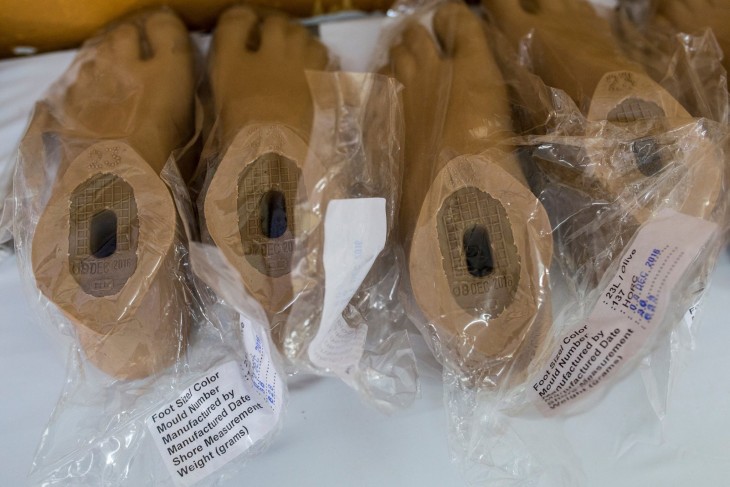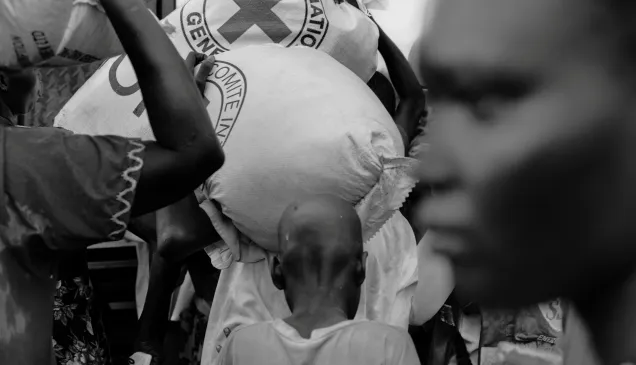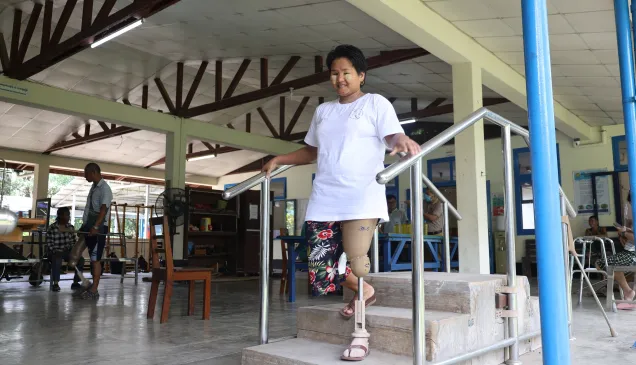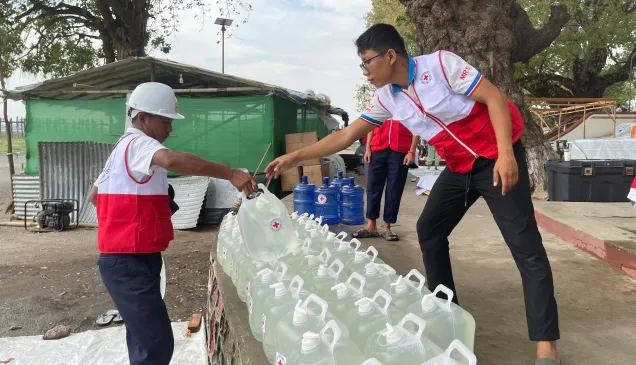Walking the distance in Myanmar
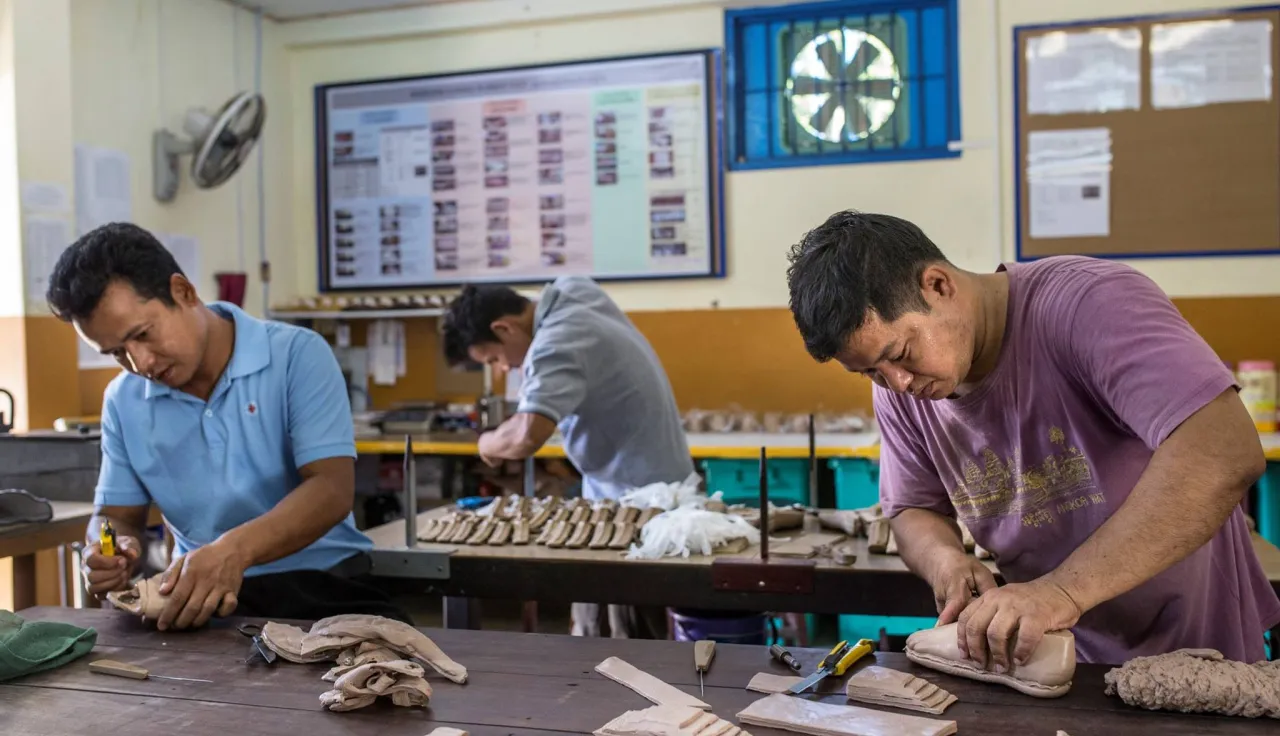
The smell of rubber and other chemicals welcomes visitors when entering the small workshop of the Hpa-an Orthopaedic Rehabilitation Centre (HORC). Zaw Zaw Aung is weighing chemicals on a balance. He is surrounded by dozens of pots – some filled with zinc oxide, some with stearic acid. Gloves lie strewn around him. A white blouse hangs nearby. It looks like a laboratory.
The HORC was opened in 2003 to mainly support victims of landmines. "Along with Afghanistan and Cambodia, Myanmar is one of the countries most severely affected. These mines cause massive injury and death to people accidentally stepping on these weapons. Those lucky to survive still suffer a major impact on their lives and livelihoods," explains Didier Reck, head of ICRC's physical rehabilitation programme in Myanmar. Parts of the region covered by the centre, Bago and Kayin, have the highest number of recorded victims and are believed to have the heaviest concentrations of mines.
Zaw Zaw Aung, 32, has been working at the centre since 2009. He went through a one-month training in Cambodia in August 2012 and did another short training on the manufacturing of prostheses from smoked rubber at the Yangon Rubber Institute in 2014. "We invest a lot to build local expertise," says Reck.
Few know that prosthetic feet are produced in Hpa-an. "At the beginning, we had no capacity and had to order them from Switzerland," explains Zaw Zaw Aung. The devices were of excellent quality but the problem was that they were not compatible with the climate. In the region of Hpa-an, temperatures can reach 36 degrees Celsius and it rains on an average of more than 200 days per year. "The [prosthetic] feet got damaged because of the heat and humidity. They became fragile within a short period of time and did not last."
Constant adaptation
So technicians like Zaw Zaw Aung started to manufacture prosthetic feet on their own at the centre with a technology developed by the ICRC using a thermoplastic called polypropylene combined with locally produced rubber. "The big advantage is that the raw material is readily available in the region as there are many plantations in Mon and Kayin States, and chemicals can be easily purchased in local markets." This contributes to support the local economy.
There are four major stages in the manufacturing of the prostheses: rubber mixing, foot shaping, vulcanizing (steaming) and packaging. Once the mixture of the rubber is ready, one has to pass the slab through a roller to make it flat. Then, one cuts it and wraps layers of rubber around a polypropylene keel. The preparation is then put in a mould in an oven for the vulcanizing phase.
The technique has been constantly improved, taking into account the local reality and challenges. "For instance, to make the feet more solid, we have decided to add fishnets between the layers," explains Reck. "We are also working with the Yangon Rubber Institute to optimize the chemical formula to obtain an adequate balance between softness, shock absorption and resistance of the final product."
More innovation in the future
The technology continues to evolve. Articulated and dynamic prosthetic feet today offer better stability to the users and require less effort to walk in. In 2016, the ICRC and the Swiss Federal Institute of Technology in Lausanne (EPFL) have started a joint research and development program called Humanitarian Tech Hub. Partners are looking into how new articulated dynamic prosthetic feet could complement the prosthetic feet currently in use. "We could be a pilot place to test such products in Myanmarm" says Reck.
But for the time being, on the outskirts of Hpa-an, in Thamut Nyun village, half an hour into his motorbike ride on a bumpy road, Saw Maung Maung, 42, lost both his legs after stepping on a landmine in 2001. "Thanks to the quality of the prostheses, I am now able to ride even a motorbike,"he says. "This helps me a lot to go to the centre to have my prostheses repaired."
Enjoying a new mobility, he spends his time hunting rats or birds, taps rubber and works on a rambutan orchard. Saw Maung Maung comes to the centre twice a year to repair his prostheses or to get new ones. Like him, almost 3,000 patients received services at the centre last year. One day, thanks to the constant evolution of the technology, his mobility might improve even further. At the same time, local expertise are developed to produce prostheses that last.
The 2014 Myanmar Population and Housing Census has shown that 4.6 % (2,331,250) of the total population has at least one of the four categories of disability (seeing, hearing, walking or intellectual/mental disorder). There is a higher proportion of people with disabilities amongst the poorest sections of society. 85% of the people with disabilities in Myanmar do not have a job and their education is considerably lower than the national average, with only 10% attending high school.
The ICRC has a long term commitment in Myanmar to help physical disabled people. It started to support a first centre in 1986. Then, a second orthopaedic workshop, the Mingaladon centre, was opened in cooperation with the Ministry of Defence. Today, physical rehabilitation is a major activity the ICRC undertakes. The ICRC supports four centres: one under the MRCS in Hpa-An and three centres under the Ministry of Health and Sports in Mandalay, Myitkyina and Kyaing Tong. In 2017, a budget of around US $1,200,000 is dedicated to run these centres.

